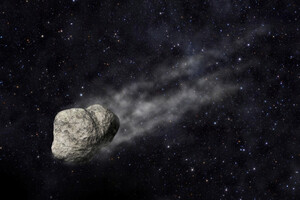The celestial body will fly past the planet at a speed of 116 thousand kilometers per hour.

An asteroid with a diameter of 380 meters, which can be compared with the size of the Empire State Building, will fly past the Earth on August 3. According to Newsweek, the asteroid was discovered only a few days ago. However, it does not pose any danger to the planet.
The asteroid, designated 2022 OE2, will fly by at a distance of 5.14 million kilometers from Earth. This is 13 times more than the distance from our planet to the moon, so there is no chance that an asteroid will hit the Earth.
Also read: Scientists say whether the “most dangerous asteroid in history” will hit the Earth
Asteroids are rocky objects that orbit the Sun, almost like planets, but much smaller. Determining the size of a “space rock” is not an easy task. This is usually based on how bright the object appears in the sky.
“The bigger it is, the more light it will reflect and therefore the brighter it will appear. However, this requires a guess as to how reflective the material it's made of is, and it can vary widely. Throw in a number of other features, and the actual size of the object can be very different from the calculated value,” explained Greg Brown, an astronomer at the Royal Greenwich Observatory in Great Britain.
Because of such uncertainties, scientists usually call the range, which may include the size of the asteroid. So, the approximate dimensions of OE2 in 2022 are 170-380 meters.
The speed with which it moves is 116 thousand kilometers per hour.
At the moment, scientists know about 29 thousand near-Earth objects. Some of them, based on their size and distance to the planet, belong to the category of potentially dangerous. But despite the name, there is no chance that any of these objects will collide with Earth in the coming centuries.
In November, NASA launched the DART spacecraft, which is supposed to crash into the asteroid Dimorpha's moon and change the trajectory of its movement. However, simulations conducted by scientists showed that this collision may not happen exactly as expected.




